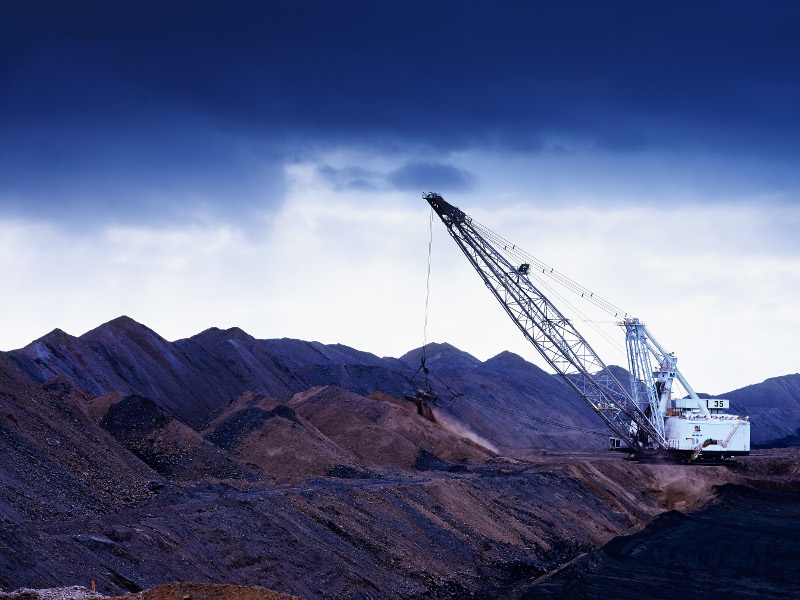Companies that explore seek to discover the mineral reserves of the future. These firms are often privately owned and are funded by venture capitalists , or by individual investors. They employ geologists, engineers, surveyors, cartographers and others to discover areas for mining extraction. The discovery of an important mineral deposit could lead to the rapid expansion of an exploration company since it can access capital for development projects in the future.
Most exploration companies in the field are small to medium-sized enterprises that have less than 10 million dollars in annual revenues. The majority of these companies are privately held and do not have stock traded on an exchange and therefore, information on them is not as easily accessible as other kinds of companies. There are some publically traded exploration companies.
Because it starts production only after new projects are discovered and put into operation The mining industry is a niche of the economy. Therefore, unlike traditional manufacturing or service industries which produce their goods on an ongoing basis, mineral companies produce their goods in a short period of time.

Exploration company revenues are very vulnerable to fluctuations in the price of commodities due to the nature of the industry’s cyclical. The prices of commodities can be highly variable and fluctuate in a wide range throughout the year because they are influenced by factors like Chinese economic growth, weather conditions that influence crop yields or the need for petroleum products for transportation.
Exploration companies’ revenue can vary greatly over the course of a year due to fluctuation in the price of commodities.
In times of huge demand for natural resources, exploration companies are often short of capital, as they are able to make huge expenditures but only revenues. In these instances, the industry is more likely to attract venture capital, which can keep exploration companies going until prices of commodity rise.
The majority of exploration companies aren’t listed on the stock exchange due to their industry nature.
The Mineral Exploration industry is closely associated with other resource-based industries such as oil and gas production, coal mining, and mining & metals. The majority of the companies engaged in mineral exploration also run production activities in other resource segments.
Diversification allows companies to lower their exposure to fluctuating commodity prices because they do not rely on one kind of resource. The differentiation of minerals is typically based on the basis of speculative-grade and inferred resource, which implies that there hasn’t been any drilling.
The majority of companies must conduct additional exploration to convert speculative grade or inferred resources to measured and indicated reserves or resources or reserves. Both are essential for mining operations. These types of work are typically conducted by junior exploration firms that specialize in early-stage minerals exploration.
Mining for mineral resources is a major capital expense upfront that can be extremely dangerous for exploration firms since there is no guarantee that they will discover valuable minerals. The company could spend substantial amounts for pre-production costs once an ore body is identified. This includes designing the mine and purchasing the long-term supply.
It is crucial to weigh the cost of exploration against future revenue as it may take many years before the mineral resources can be turned into an operating mine. This cycle of investment has led many companies to do some or all their exploration activities through joint ventures with other firms that have the financial capacity to see high-cost projects through to production. The junior exploration companies are able to focus on early-stage exploration and partnering with larger players who can finance later-stage development activities.
The performance of mineral exploration companies typically depends on their ability to raise fresh equity or secure project funding from mining giants and/or financial institutions. This capital source is crucial for junior exploration firms because it is able to provide the funds needed to take a project through the early stages of development and exploration.
If you are looking to learn more, click gold, silver and copper exploration
If an economic ore body is identified and production costs are able to be fully covered, there’s likely to occur an initial public offer or sale of stock to raise additional capital to construct an underground mine. If the company’s shares aren’t traded on any stock exchanges, it could go through bankruptcy or be purchased by a business who is more interested in mining exploration.
Copper deposits with high-grade are one of the most sought-after minerals in mining since they can make huge profits from small amounts of ore. Copper is typically extracted from deposits of high-quality but low-grade that comprise only 0.3 to 0.7 percent copper metal in weight.
Mining companies may be classified as either junior exploration companies or larger mining companies. They differ in that the latter concentrates on large, capital-intensive projects that have proven and constant reserves (e.g. production of bauxite and alumina production) in contrast, those of the latter are focused on exploration and highly-risky resources (e.g. gold and diamonds).